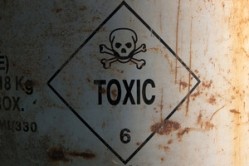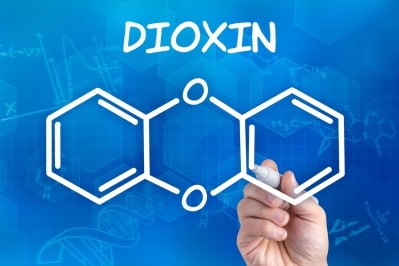EU dioxin monitoring likely to focus only on high risk feed materials in future

Negotiations have been underway in Brussels the past few weeks on a review of the relatively new EU Regulation 225/2012 controls on oil and fat-derived products used as feed materials.
So far, the discussions have focused on the mandatory monitoring regime for dioxin and PCB contamination.
Arnaud Bouxin, deputy secretary general of the European Federation of Feed Manufacturers (FEFAC), told us that organization expects the requirement for testing for 100% of batches to be retained only for a small number of feed materials.
Most EU countries and the European Commission are said to want to reduce the impact of the mandatory monitoring controls for those feed products derived from oils and fats that are of low risk, and to concentrate on those considered higher risk of contamination by dioxins and PCBs.
“Data collated by producers of certain fats and oils of vegetable and marine origin over 12 months, which was sent to the Commission as part of an in-built evaluation mechanism in Regulation 225/2012, indicates that only certain products are high risk for dioxin contamination such as fatty acid distillates and fish oil,” said Bouxin.
He said the excellent risk profiling work undertaken by operators in the fats and oil sectors, in collaboration with the authorities, should result in a reduction in the frequency of monitoring required for those businesses.
Nathalie Lecocq, director general of the federation representing the EU vegetable oil and protein meal industry (FEDIOL), told us the organization is hopeful that the Commission may take a risk based approach in the revision of the legal rules on dioxin testing as laid down in the regulation.
“We understand there is acknowledgement of the low dioxin risk profile of, for instance, acid oils from chemical refining and that this could result in taking these products out of the category of products that need batch wise dioxin testing.
Since 2011, FEDIOL has been gathering over 3,000 data points on dioxin levels in feed products from oil seed crushing and vegetable oil refining from member companies. Companies also performed a number of case studies on dioxin testing of refining inputs and outputs. The data was shared with authorities and with EU sectors involved,” she said.
Last July saw representatives of member states, FEDIOL, the marine ingredients organization (IFFO) and the EU animal by-product processing sector (EFPRA) discuss the Regulation at a meeting organized by the Commission’s Standing Committee on Plants, Animals Food and Feed (SCoPAFF).
Break-out sessions were included to allow attendees to present their data, findings and concerns related to the dioxin monitoring in feed fats and oils.
IFFO presented the dioxin data in fish oils and reported subsequently that member states “appeared satisfied with the degree of control that the fish oil industry was able to demonstrate in this critical area.”
Ambiguity of language
One issue that still needs clarification in the legislation though, added Bouxin, is the ambiguity of the language around “evidence” of testing for fat and oil products, which is typically done upstream in the feed chain.
Paragraph five of the dioxin monitoring section of the Regulation does not specify the format and content of information that feed businesses carrying out mandatory testing should transmit to their customers as proof that products have been tested and are compliant.
FEFAC hopes such obfuscation will be amended as part of the current review of the Regulation, which Bouxin said should be completed by the end of next month.
Background
A number of past feed safety crises in Europe such as dioxins in fatty acids or in dried food co-products were linked to poor hazard identification and risk management measures by the feed business operators concerned.
These crises indicated that some activities or products can be considered more of a risk than others, which saw the Commission bring in revised legislation in March 2012.
Regulation 225/2012 amended Regulation 183/2005 and introduced new obligations for establishments placing on the market, for feed use, products derived from vegetable oils and blended fats, including conditions for production, storage and transport, as well as the dioxin testing of fats, oils and derived products.














